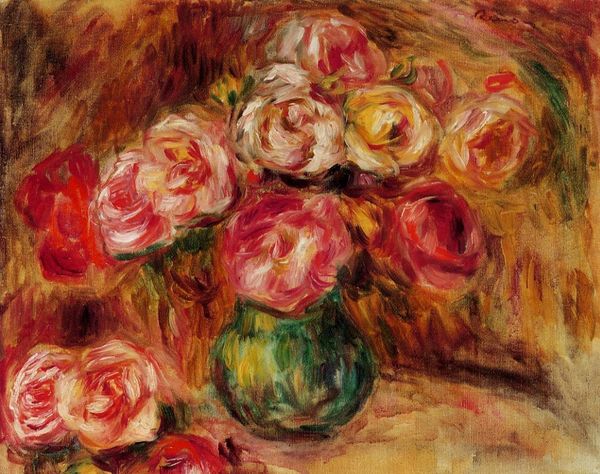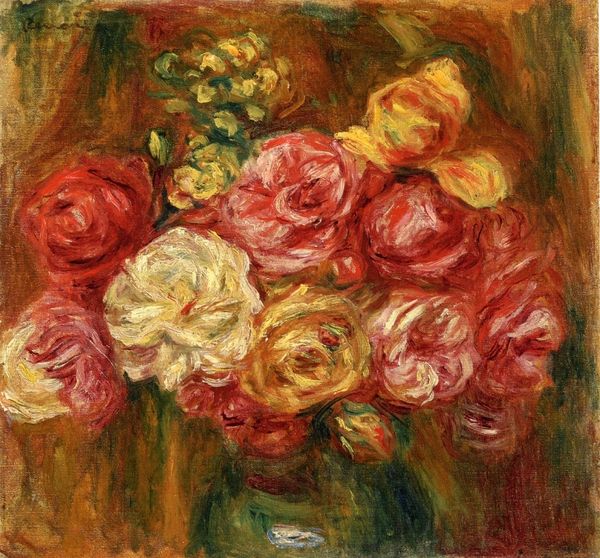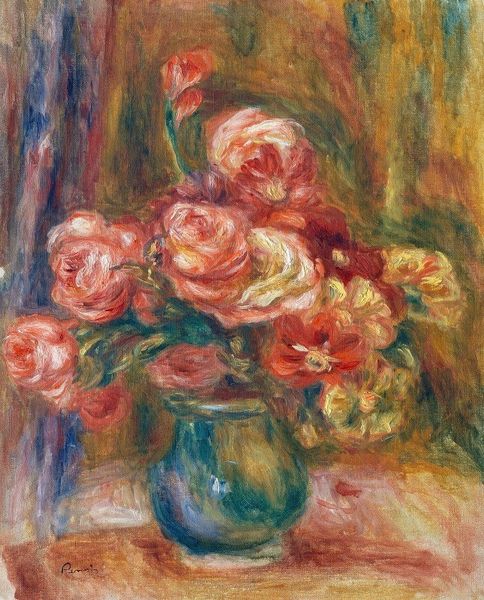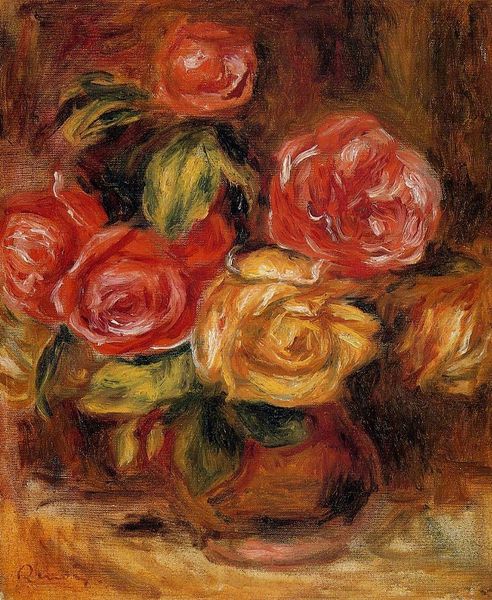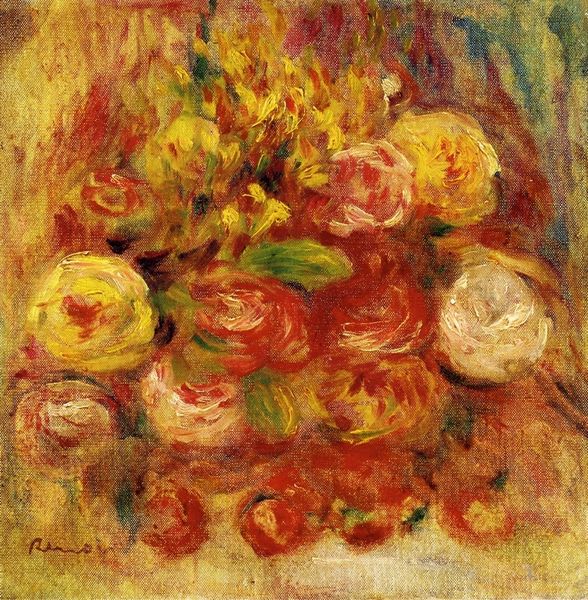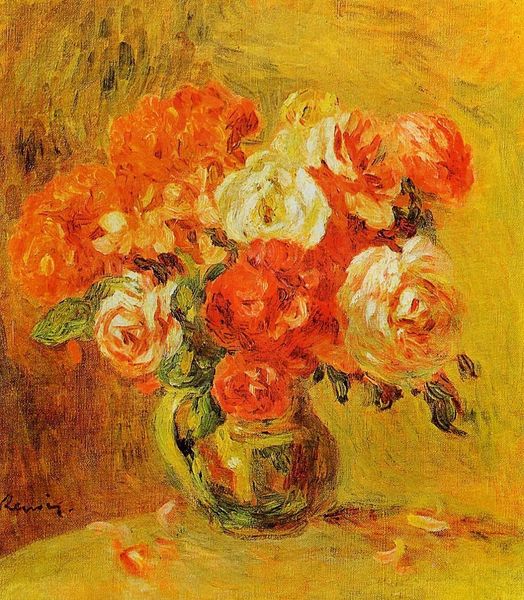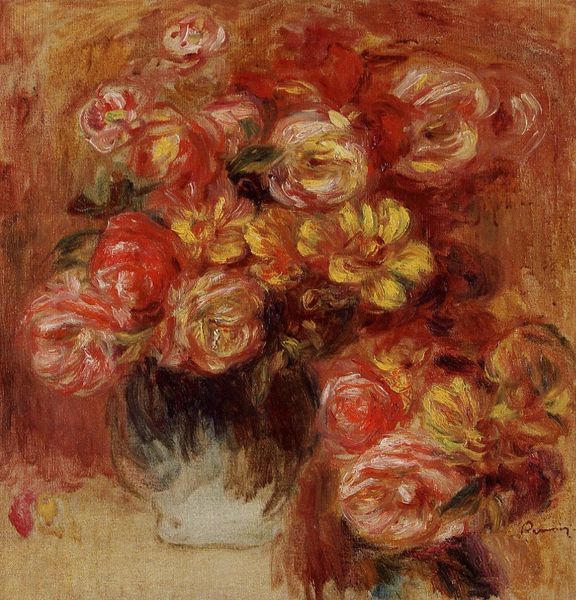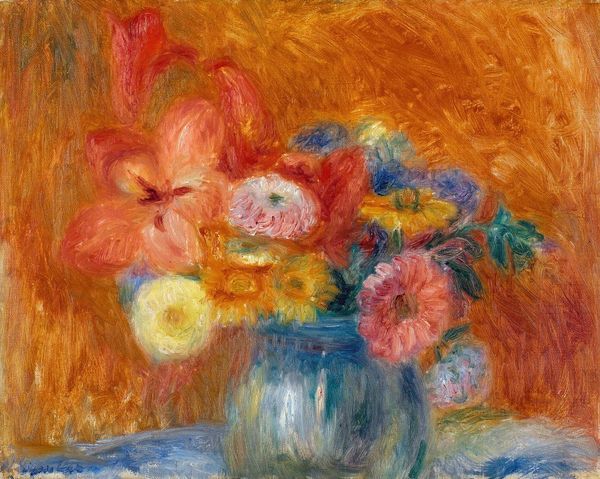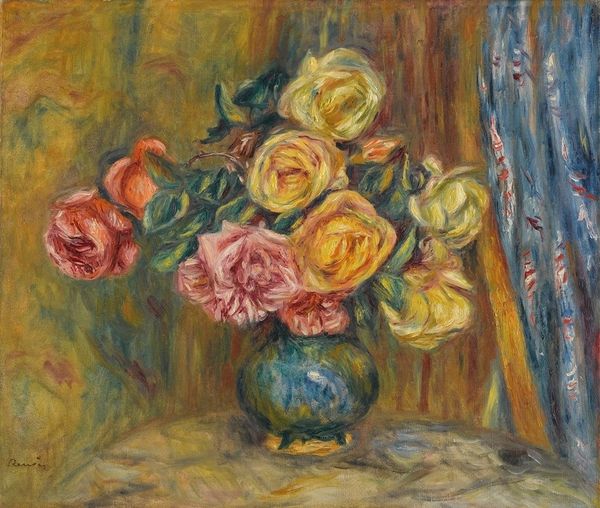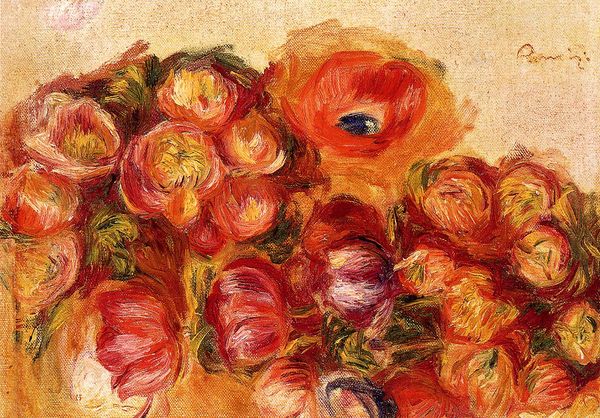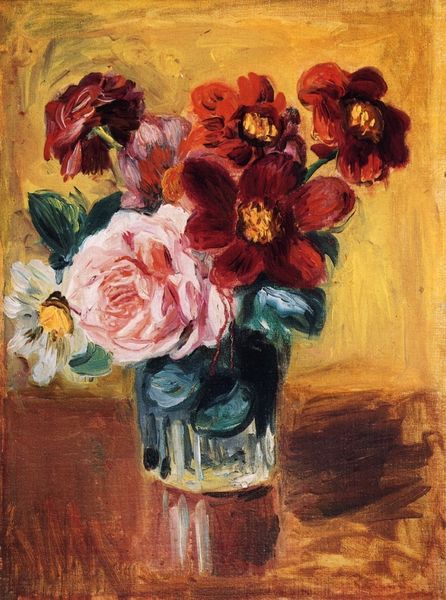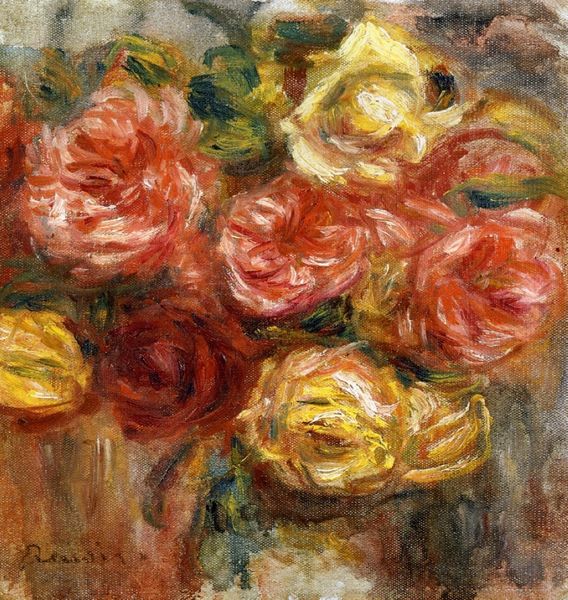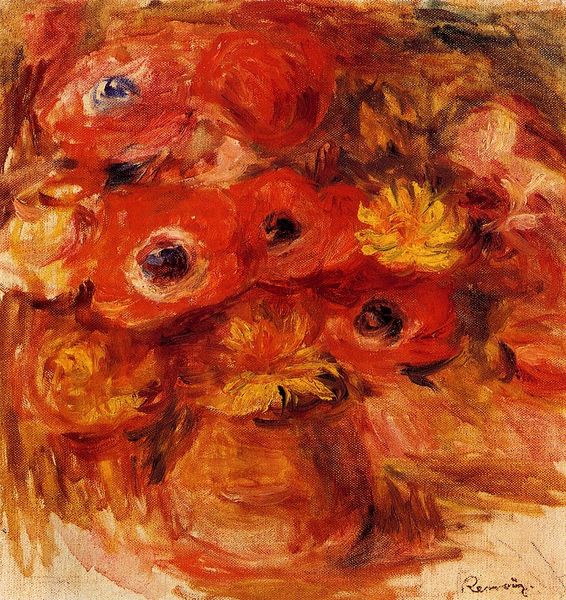
Copyright: Public domain
Editor: Here we have Renoir’s "Roses in a Vase," created around 1912 using oil paint. I am immediately drawn to the texture; it feels so thick and rich. What are your initial thoughts on the materiality of this painting? Curator: Well, the impasto technique is immediately apparent. Think about what that meant for the accessibility of art at this time. Oil paints weren't easily or cheaply mass-produced, so who had access to them, and who did this painting serve? Consider, too, the value we ascribe to 'originality'. In Renoir’s time, industrially manufactured paints began impacting how artists thought about their craft. He continued to use costly paints for art collectors when other options for reproduction became available. Why is this, do you think? Editor: That’s a really interesting point. It sounds like Renoir was maybe deliberately pushing back against industrialization. Does the subject matter then take on an elevated significance because of the medium? Curator: Exactly. Consider the socio-economic status of the artist and patron versus those producing decorative arts with similar subject matter through nascent commercial channels. These “Roses” aren’t just roses; they are symbols of luxury and of resisting cheaper reproduction, achieved via the costly production of original oil paintings on stretched canvas. He’s actively elevating his role as an ‘artist’ over any mere artisan producing decoration, aren’t they? Editor: So, it is a statement about labor, really—his artistic labor and its distinction from industrial production. That is thought-provoking, as a kind of quiet rebellion manifested in the brushstrokes themselves. Curator: Precisely! I’m glad we looked beneath the surface of something that seems decorative and found something powerful. Editor: I agree, thank you. I’ll definitely look at paintings with a materialist lens from now on.
Comments
No comments
Be the first to comment and join the conversation on the ultimate creative platform.
